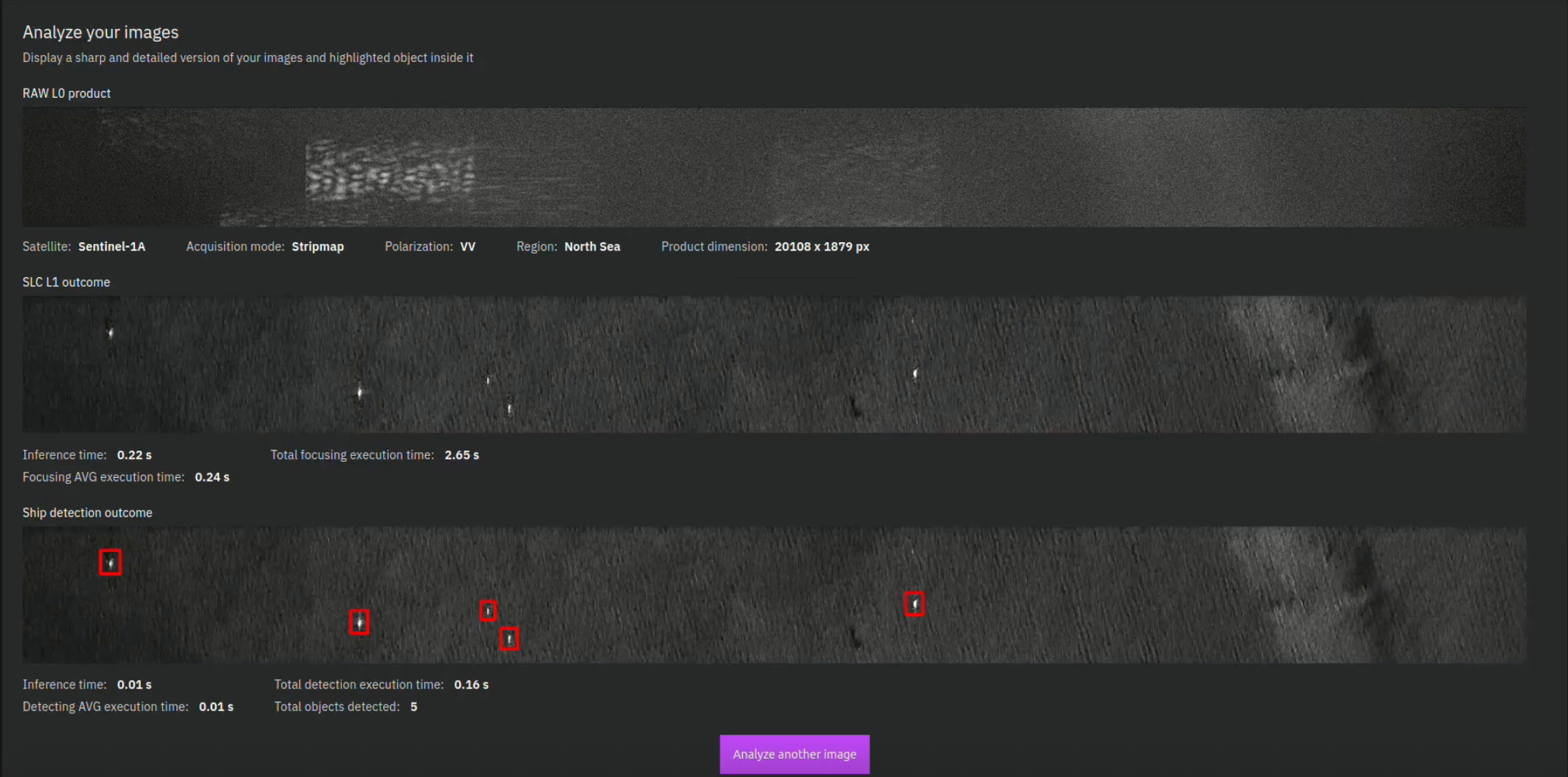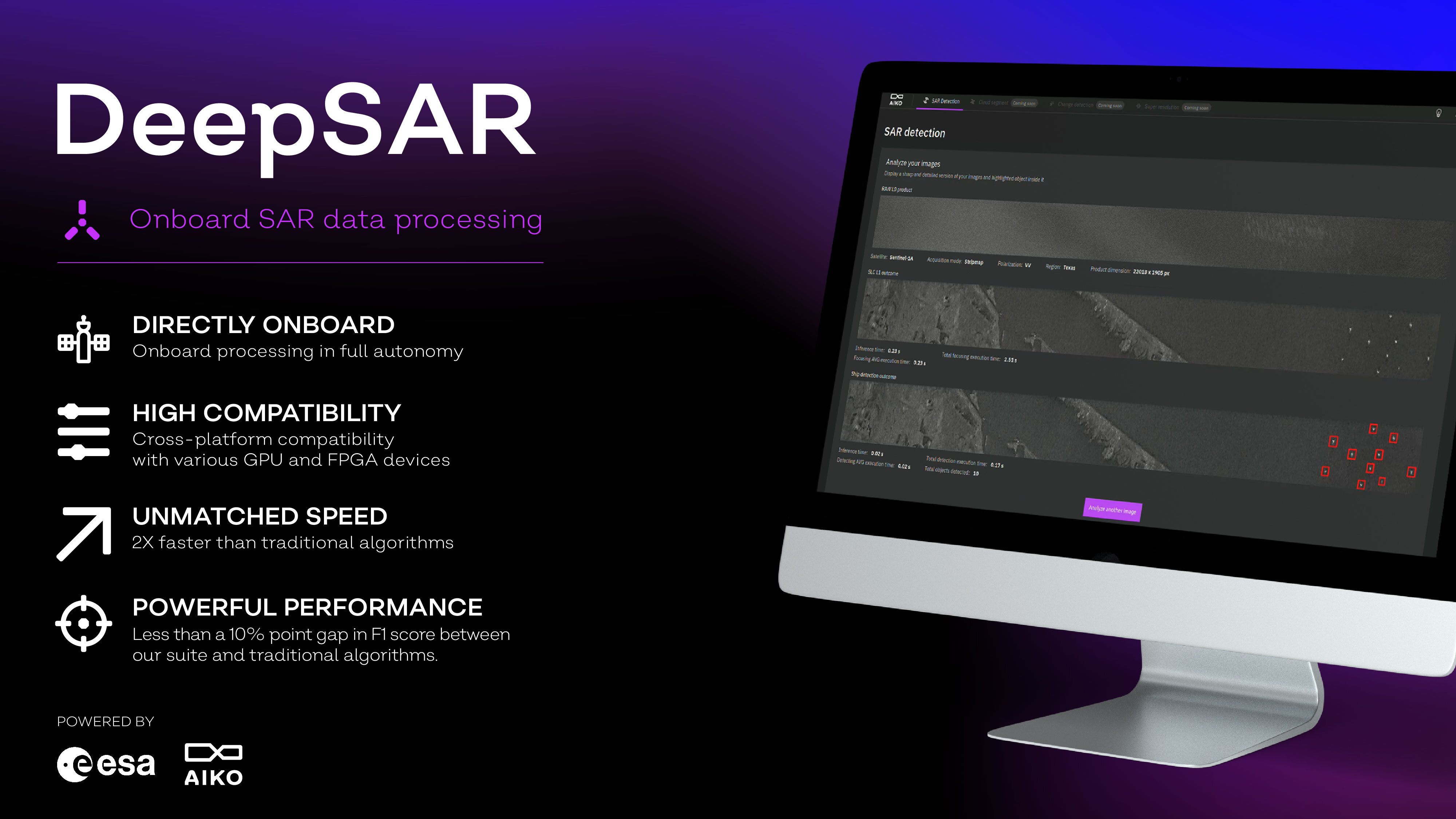
DEEPSAR
In the vast expanse of Earth Observation (EO), real-time surveillance has emerged as an imperative need. To address this, the European Space Agency (ESA) has launched the groundbreaking DeepSAR project. Powered by AIKO’s Artificial Intelligence (AI) and Deep Learning (DL), DeepSAR aims to revolutionize space-based monitoring intelligence by enabling onboard Synthetic Aperture Radar (SAR) data processing. Here's an in-depth overview of this game-changing initiative:
Project Overview
DeepSAR is designed to unlock real-time surveillance capabilities by processing SAR data directly onboard satellites. While optical images have traditionally dominated real-time monitoring due to their ease of interpretation, SAR data offers distinct advantages, especially in scenarios where cloud cover or darkness obscures optical imagery. Through AI and DL, DeepSAR seeks to enhance the autonomy of satellites, enabling advanced concepts of operations.
Mission Scenario
The project focuses on the Sentinel-1 mission, an ESA mission in the context of the EU Copernicus Earth Observation programme, which consists of a constellation of two satellites equipped with a C-band SAR payload. The acquisition modes analyzed are Stripmap (SM) and Interferometric Wide (IW), with polarization options including Co-pol (HH, VV).
Use Case
DeepSAR targets two primary use cases:
- Ship Detection: This involves pinpointing ships with high accuracy, providing bounding box-level identification.
- Scene Classification: The aim is to broadly categorize different regions of interest (ROIs) directly from raw SAR products.
Dataset and Metrics
The dataset, generated using an internally-developed version of the Range-Doppler Algorithm (RDA), comprises products at various processing levels, enabling comprehensive analysis. Metrics such as F1 score and Recall are chosen to evaluate detection and classification capabilities, respectively.
Hardware Tested
To deploy and test the DeepSAR pipeline, a range of embedded devices were shortlisted, including NVIDIA Jetson Xavier NX, NVIDIA Jetson AGX Orin, Xilinx Zynq UltraScale+ MPSoC ZCU104, and Xilinx Versal™ AI Core series VCK190.
Results
The performance assessment of F1 score and processing time reveals the efficiency of DeepSAR across different hardware configurations. AIKO’s DL demonstrated the feasibility of performing quasi real-time SAR data processing achieving an impressive F1 score of 0.8 on ship detection. Moreover, AIKO’s DL demonstrated an average processing time that is twice as fast as the traditional routine. These results underscore the effectiveness of DeepSAR in enhancing both accuracy and efficiency in space-based surveillance.

By harnessing the power of AI and DL, ESA is at the forefront of unlocking the full potential of SAR data for real-time applications, with implications spanning defense, maritime security, disaster response, and environmental monitoring. As DeepSAR continues to evolve, its impact on Earth Observation and beyond is poised to be profound.